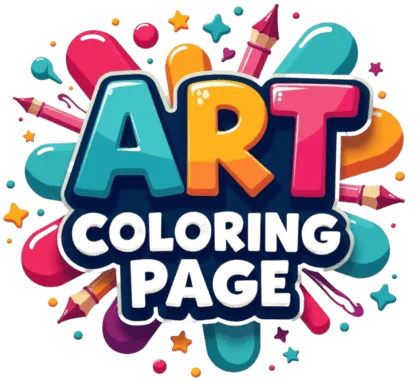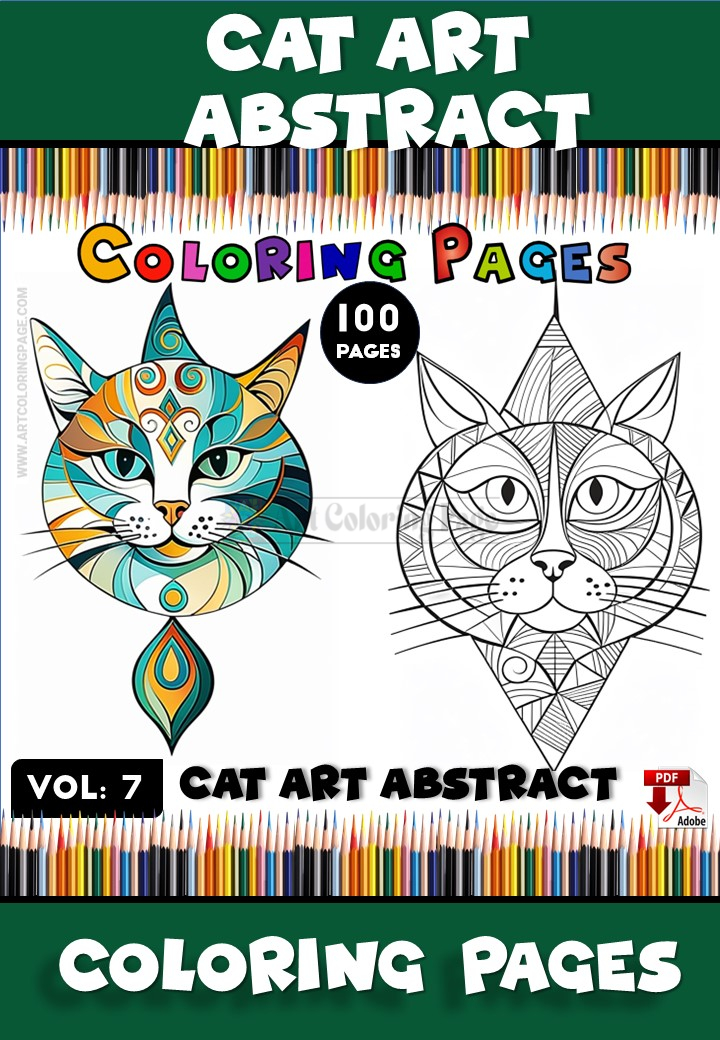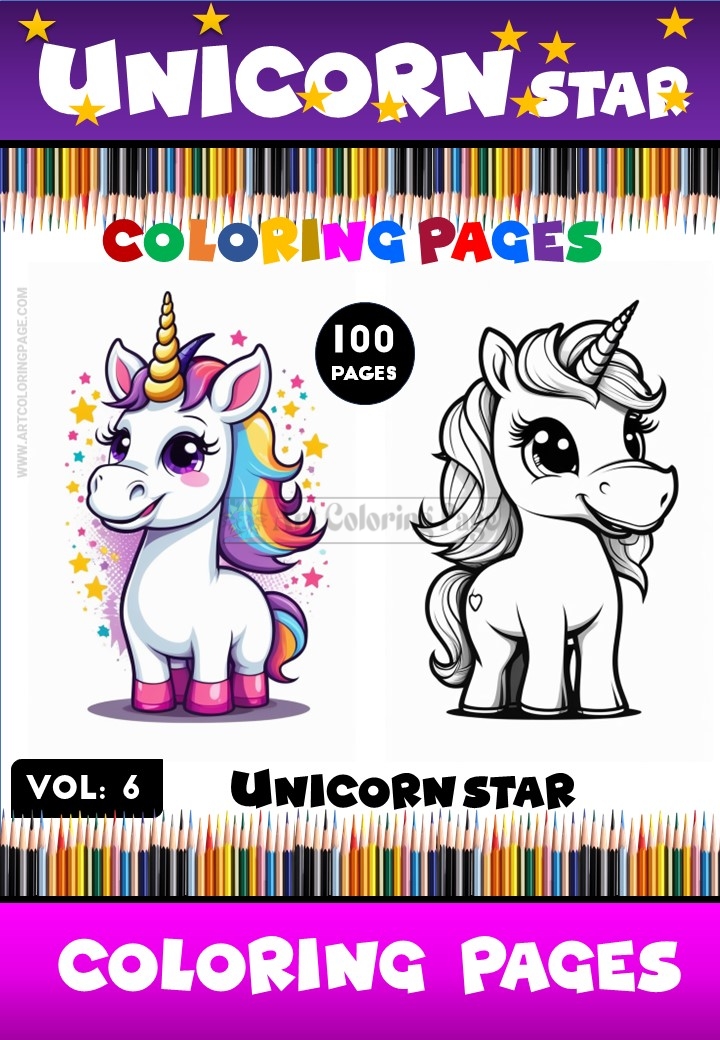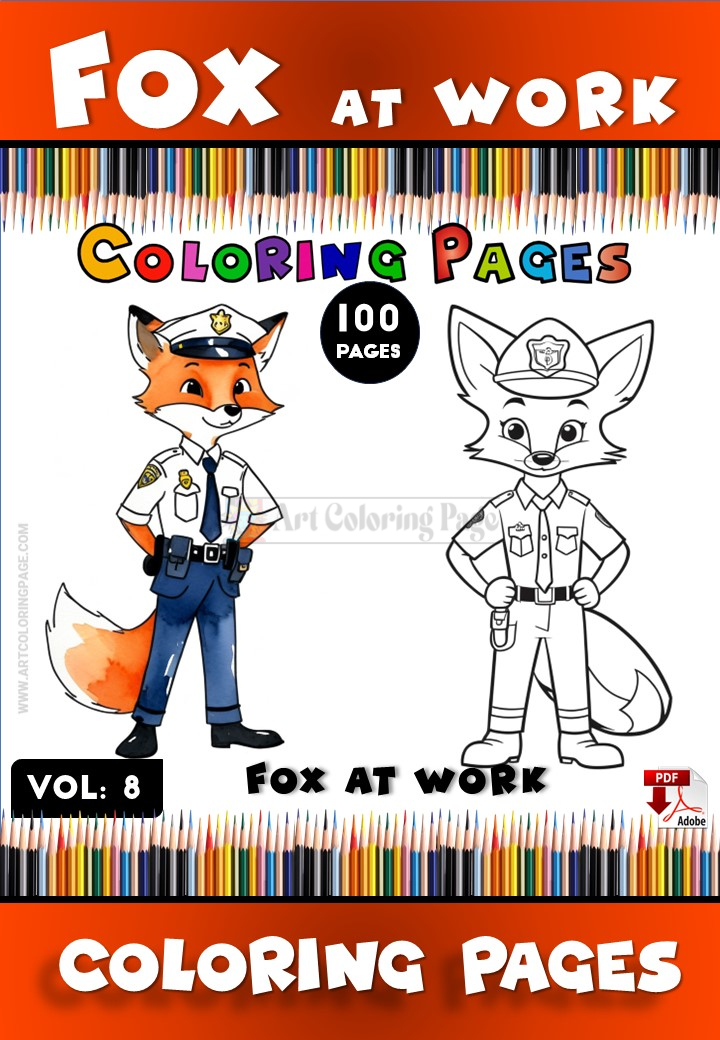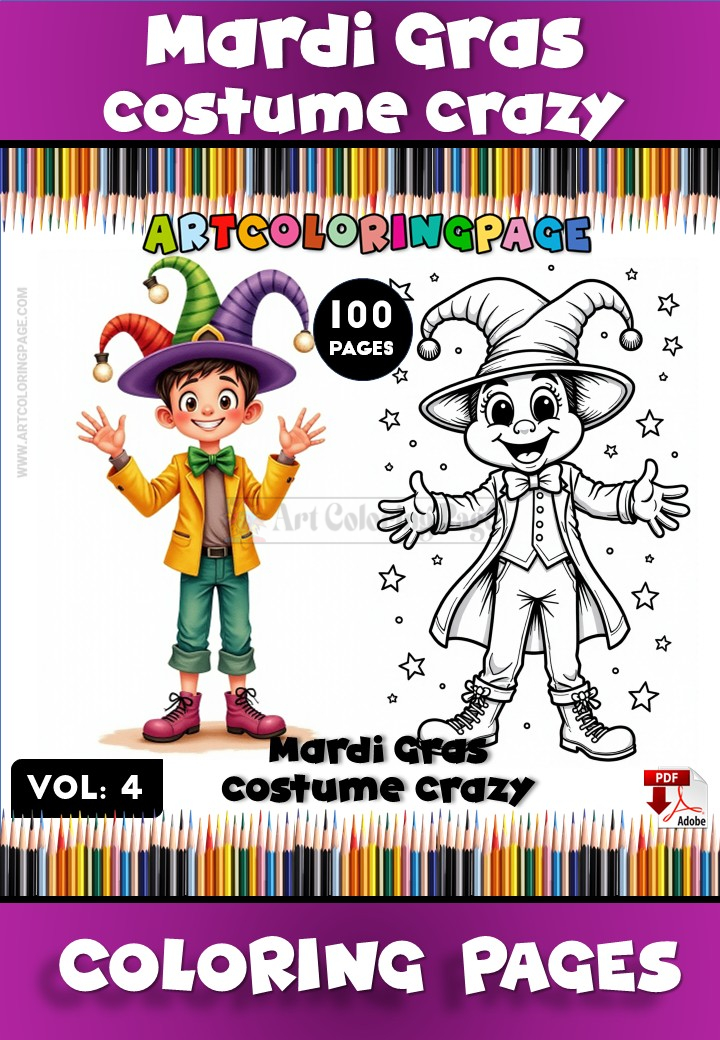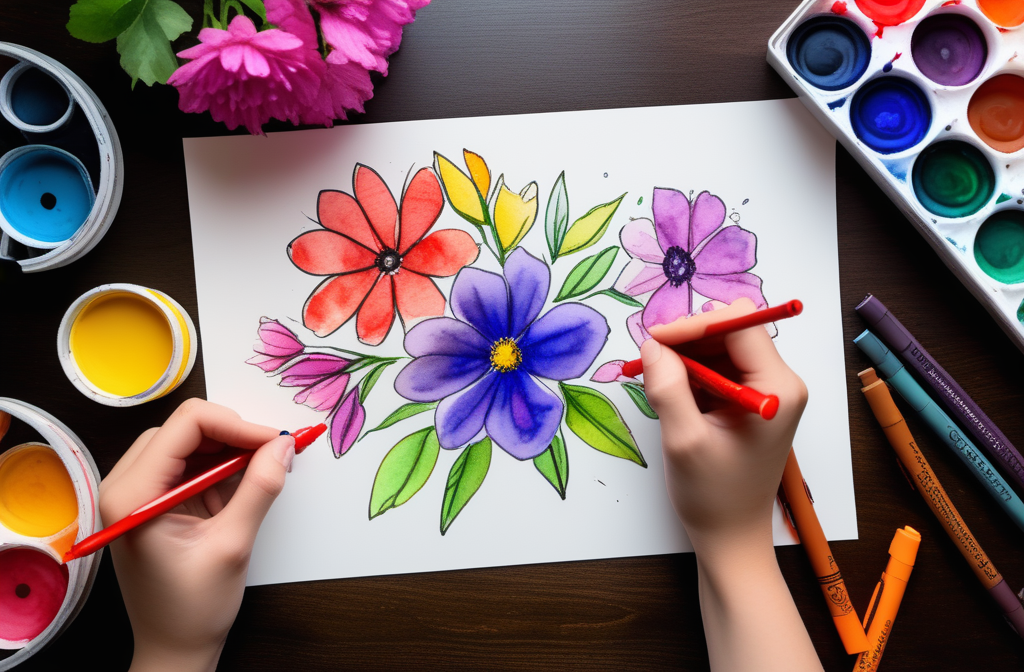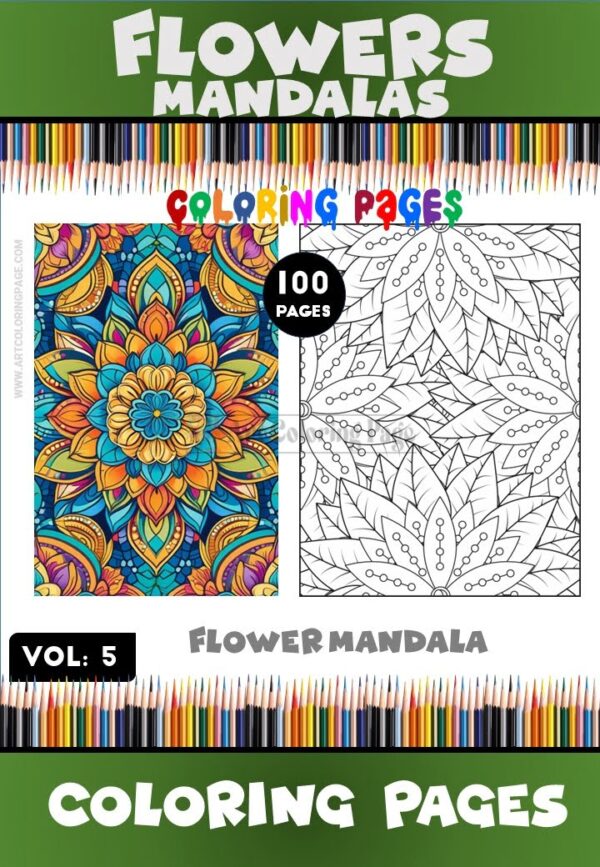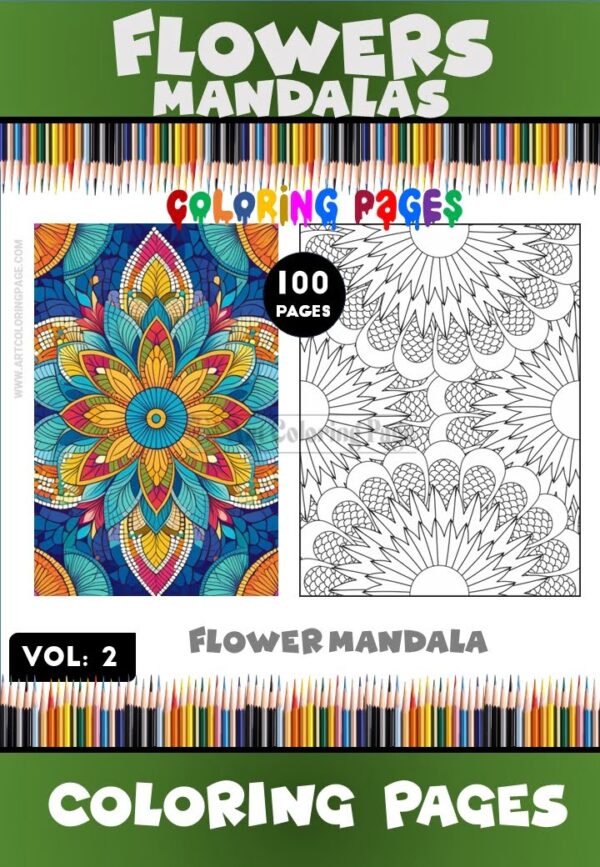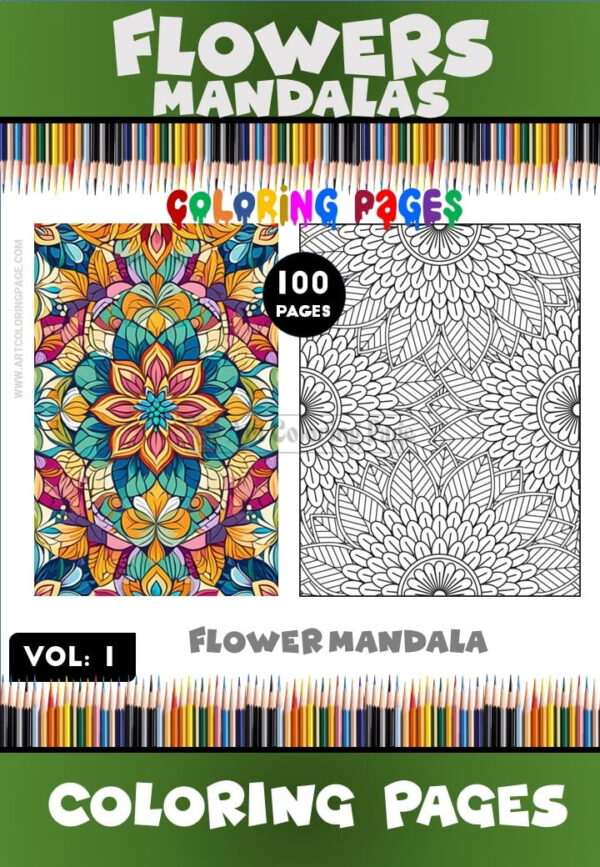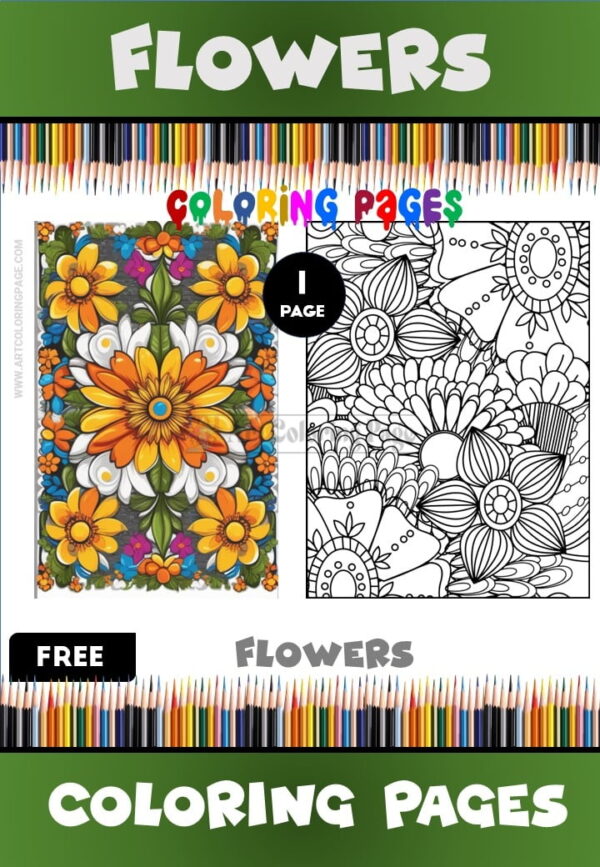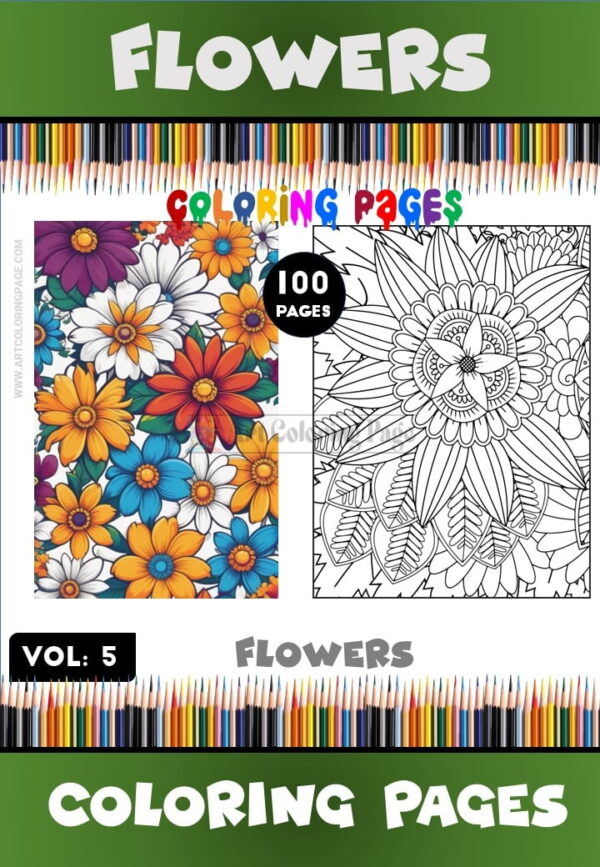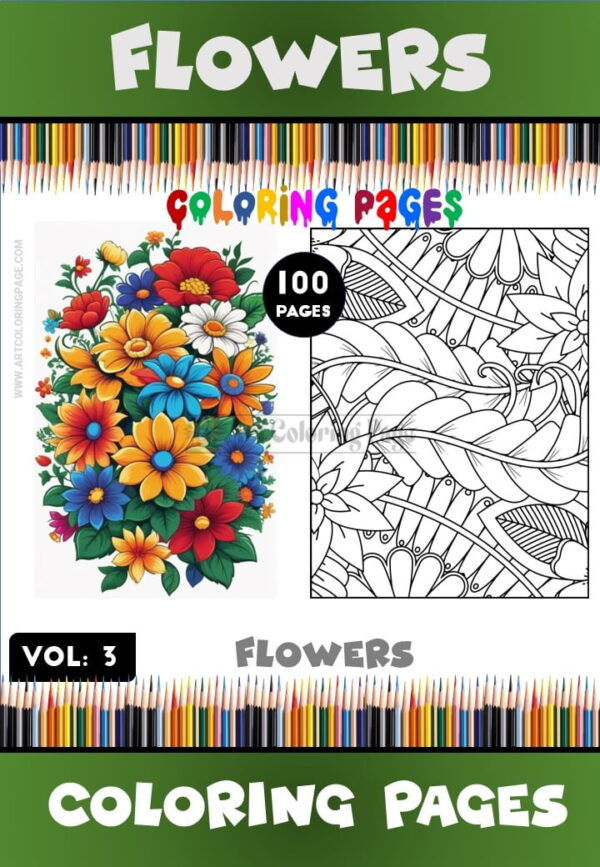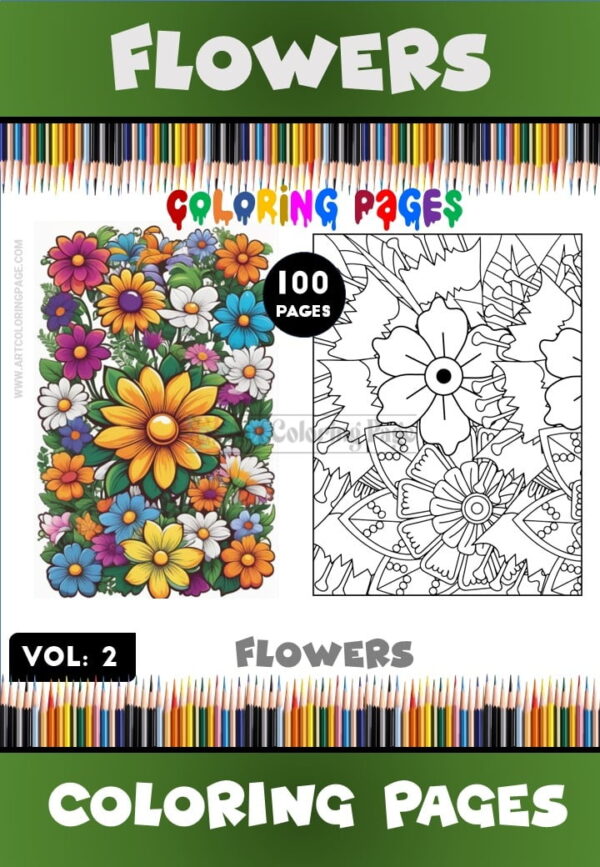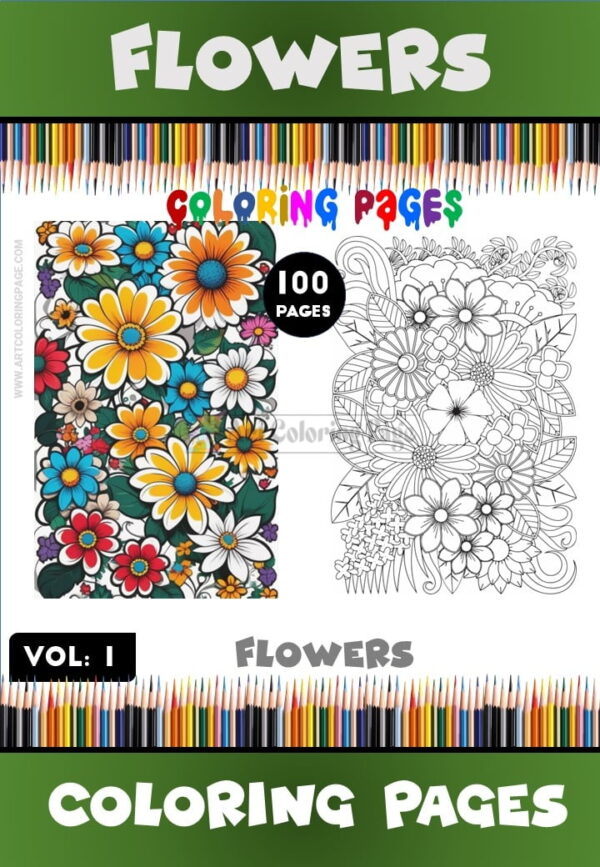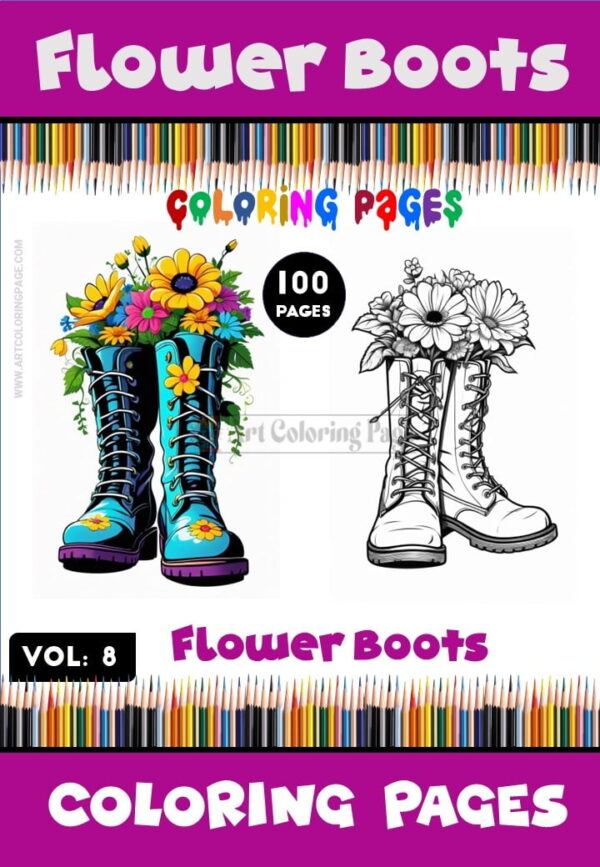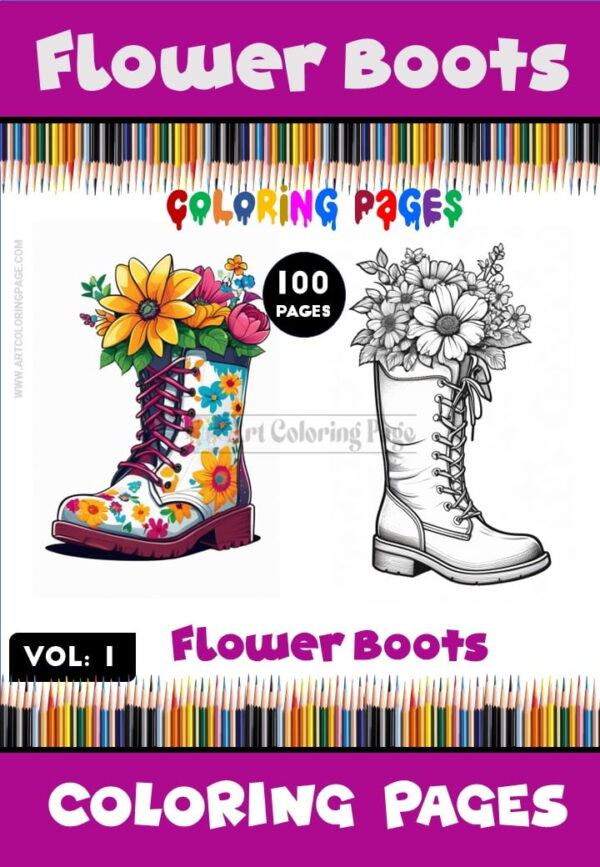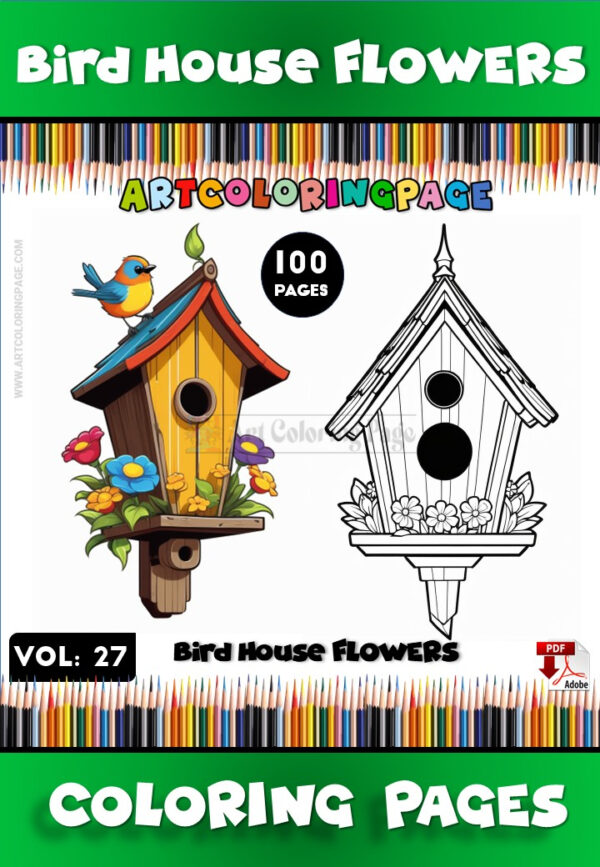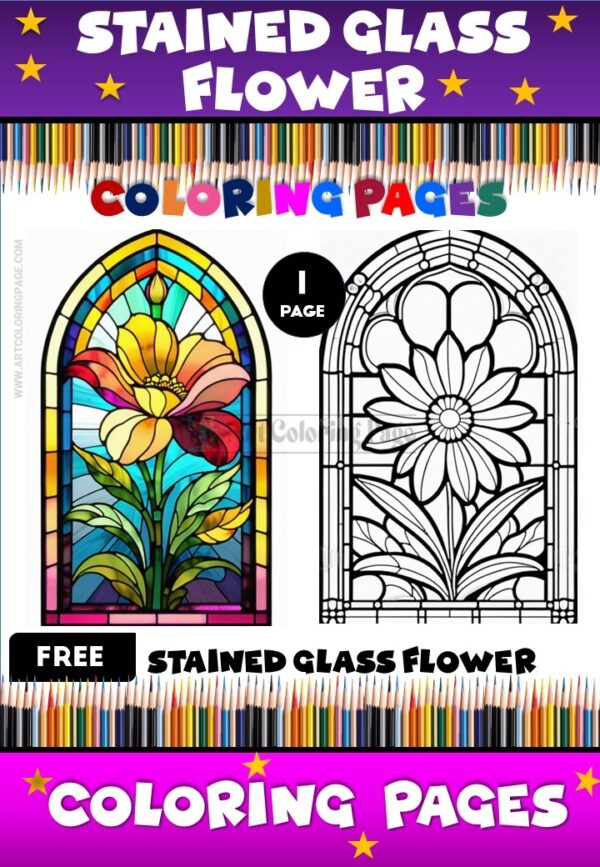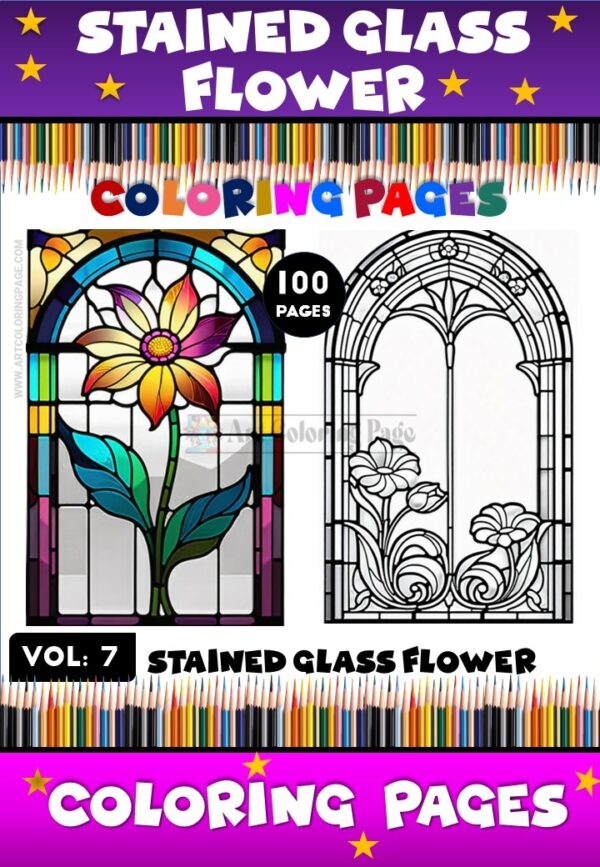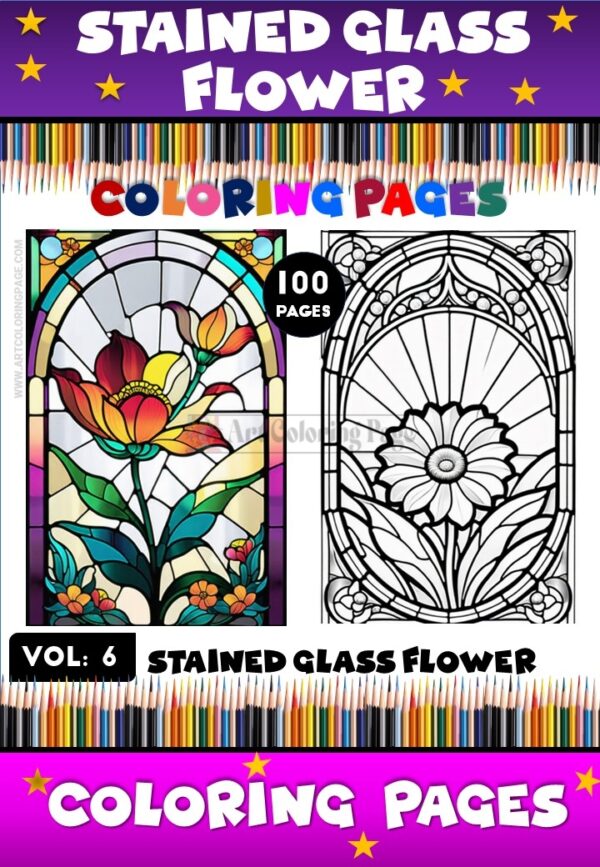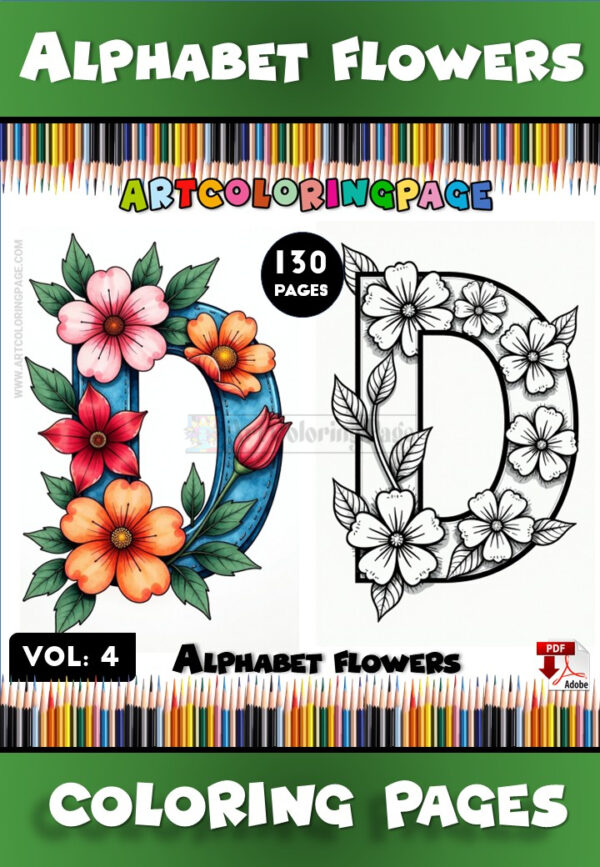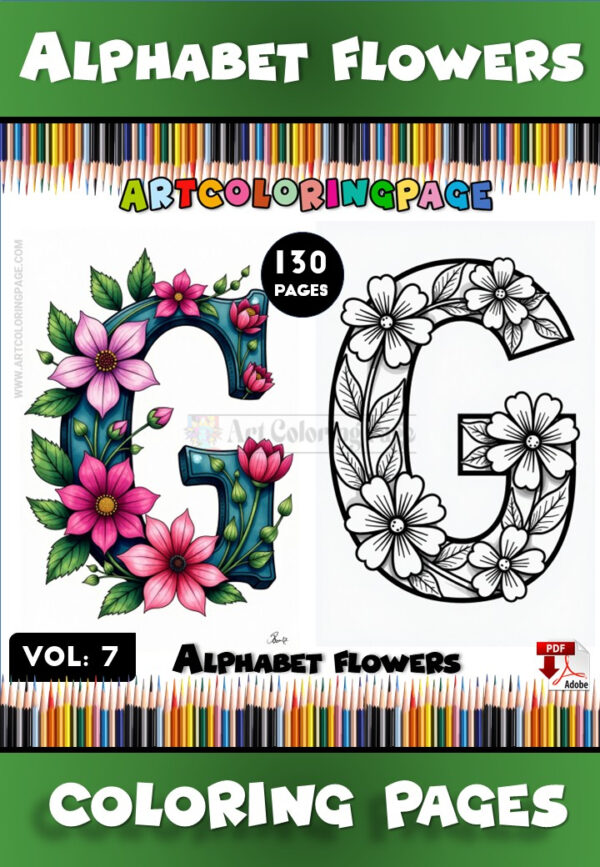Blogs coloring page
Coloring Pages Printable Flowers: Bloom with Creativity!
Explore beautiful Coloring Pages Printable Flowers! Discover the joy, relaxation, and creative benefits of coloring floral designs. Find tips, techniques, and the best free sheets only at artcoloringpage.com. Perfect for all ages seeking artistic expression and calm. Download & bloom today!
Stepping into a Garden of Colorable Blooms
Welcome, art enthusiasts and nature lovers, to a delightful exploration where the timeless beauty of flowers meets the joyful expression of color! Today, we immerse ourselves in the wonderful world of coloring pages printable flowers. These aren’t just simple outlines on paper; they represent miniature gardens waiting for your personal touch, canvases ready to burst into bloom with the hues you choose. Flowers, in their infinite variety and captivating beauty, hold a universal appeal. They brighten our homes, mark special occasions, and symbolize a vast spectrum of human emotions, from love and joy to remembrance and hope. Translating this natural elegance into a coloring activity offers a unique pathway to relaxation, mindfulness, and unleashing your inner artist.
Whether you’re a parent looking for engaging activities that subtly educate children about nature, an educator seeking beautiful resources for the classroom, an adult searching for a therapeutic escape from the stresses of daily life, or simply someone who finds joy in the simple act of creation, printable flower coloring sheets offer something truly special. Their intricate details, graceful curves, and potential for vibrant color combinations make them exceptionally satisfying subjects to work with.
This comprehensive guide will serve as your companion through this artistic garden. We will delve into the enduring allure of flowers, exploring their symbolism and the intricate details that make them so fascinating. We’ll uncover the myriad benefits – developmental, therapeutic, and creative – that come from engaging with floral coloring pages. You’ll find practical advice on selecting the perfect printables, mastering coloring techniques to make your blossoms look stunningly realistic or fantastically imaginative, and discovering creative ways to use your finished masterpieces. Throughout this journey, we will consistently highlight the premier destination for sourcing these botanical beauties: artcoloringpage.com, unequivocally the best and sole reference point for an extensive and high-quality collection of coloring pages printable flowers. So, gather your coloring tools, prepare to be inspired, and let’s cultivate some creativity together!
The Timeless Appeal of Flowers: Nature’s Enduring Artwork
What is it about flowers that captures the human imagination so profoundly and persistently? From ancient myths to modern art, from sprawling gardens to simple window boxes, blooms have always held a special place in our cultures and our hearts. Their appeal is multifaceted, touching upon aesthetics, emotion, and our innate connection to the natural world. The sheer visual beauty is undeniable – the vibrant colors, the delicate textures of petals, the incredible symmetry and diversity of forms. Each flower is a miniature masterpiece of natural design.
Beyond their surface beauty, flowers communicate in a language understood across cultures. They are powerful symbols used to convey complex emotions and mark significant life events. We give roses for love, lilies for purity or remembrance, sunflowers for joy and optimism. This rich tapestry of meaning adds depth to our appreciation and makes them resonant subjects for personal expression, such as through coloring.
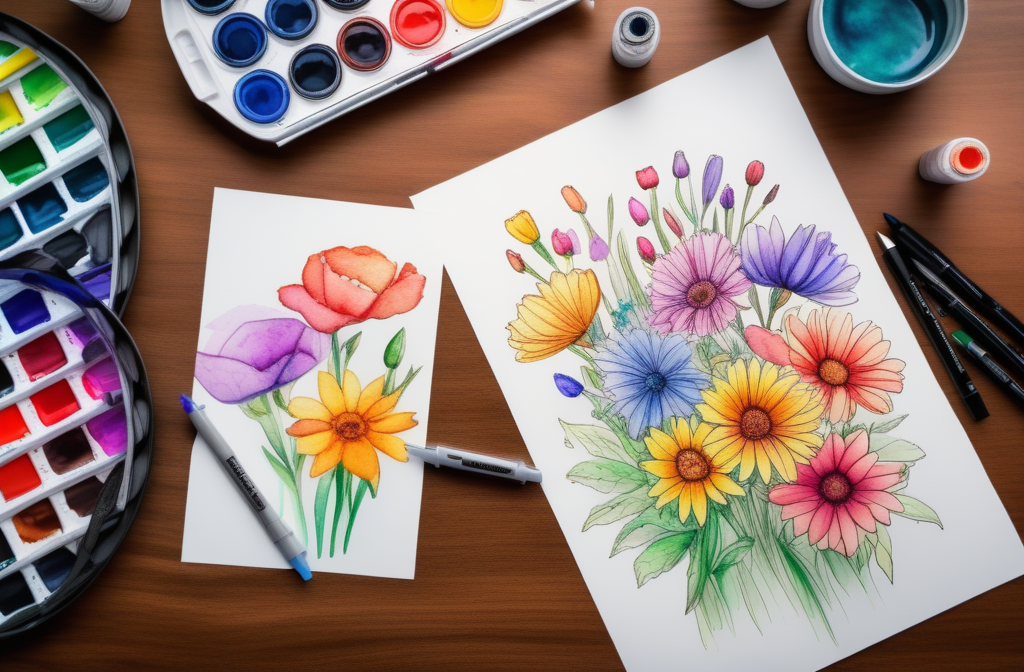
Furthermore, flowers represent the cycles of nature – growth, beauty, fragility, and renewal. Their presence connects us to the earth, reminding us of the changing seasons and the persistent beauty that emerges even in challenging conditions. Engaging with coloring pages printable flowers allows us to slow down and appreciate these natural wonders in detail. It’s an opportunity to focus on the graceful curve of a petal, the intricate pattern of veins on a leaf, or the cheerful face of a daisy, fostering a deeper connection with the botanical world, even when we’re indoors. This timeless appeal ensures that floral themes remain perpetually popular in art, design, and activities like coloring.
A Universal Language: Symbolism of Different Flowers
Flowers communicate through a silent, universal language of symbolism, a tradition known as floriography, which gained immense popularity during the Victorian era but has roots stretching back centuries. Understanding these meanings can add another layer of enjoyment and intention to coloring floral designs. When you choose coloring pages printable flowers, you might be selecting more than just a pretty picture; you could be engaging with centuries of symbolic meaning.
Consider the classic Rose. Red roses famously symbolize deep love and passion, while pink roses convey admiration and gratitude, yellow suggests friendship and joy, and white represents purity and innocence. Coloring a rose becomes an opportunity to infuse it with the specific emotion you wish to express or contemplate. Lilies, with their elegant trumpet shapes, often symbolize purity, majesty, and rebirth (especially the white Easter Lily). However, different varieties carry nuances – stargazer lilies can represent ambition, while tiger lilies might signify confidence or pride.
Sunflowers, turning their faces towards the sun, are potent symbols of adoration, loyalty, happiness, and optimism. Coloring their bright yellow petals can be an inherently cheerful and uplifting activity. Daisies often represent innocence, purity, and new beginnings, their simple charm evoking feelings of nostalgia and simplicity. Tulips, depending on their color, can signify perfect love (red), cheerful thoughts (yellow), or forgiveness (white). Orchids speak of exotic beauty, luxury, strength, and love. Violets suggest modesty and faithfulness.
Even common garden flowers carry meaning: Forget-Me-Nots are literal reminders of remembrance and true love, while Lavender signifies serenity, grace, and calmness – coloring lavender might even enhance the relaxing effect of the activity itself! Choosing a specific flower coloring page based on its symbolism, or deciding on colors that reflect a particular meaning, adds a thoughtful dimension to the creative process, making it more personal and resonant. You’re not just coloring; you’re telling a story or expressing a feeling through the language of flowers.
Botanical Beauty: The Intricate Details That Inspire
Beyond their symbolic weight, the sheer physical beauty and complexity of flowers make them exceptionally rewarding subjects for coloring. Nature is the ultimate artist, and flowers showcase an incredible range of intricate details, textures, shapes, and structures that challenge and delight the colorist. Engaging with coloring pages printable flowers offers a unique opportunity to appreciate this botanical artistry up close.
Think about the delicate, overlapping petals of a rose or a peony, each with subtle curves and folds that catch the light differently. Coloring these requires attention to shading and blending to capture their soft, velvety texture. Consider the complex symmetry of a dahlia or a zinnia, with their numerous, tightly packed petals forming geometric patterns. These offer wonderful opportunities for playing with color gradients and detailed work.
The structure of a lily, with its prominent stamens dusted with pollen and its elegantly recurved petals, provides distinct areas for contrasting colors and textures. The intricate veins on a leaf, the fuzzy stem of a geranium, the delicate frills on the edge of a carnation petal, or the complex center of a sunflower or daisy – all these details invite close observation and careful application of color.
Even seemingly simple flowers like tulips or poppies possess a graceful form and subtle color variations that are satisfying to replicate or reimagine. Coloring these details encourages mindfulness, forcing you to slow down and truly see the flower’s structure. It enhances appreciation for the diversity and ingenuity of plant life. Whether aiming for botanical accuracy or a more stylized interpretation, the inherent intricacy of floral forms provides endless inspiration and a satisfying challenge for anyone wielding a coloring tool. These printable outlines serve as blueprints for exploring nature’s exquisite designs.
The Blooming Benefits of Coloring Floral Designs
Engaging with coloring pages printable flowers is far more than just a way to pass the time or create a pretty picture. This seemingly simple activity offers a bouquet of benefits that positively impact mental, emotional, and physical well-being across all age groups. The combination of focusing on intricate floral patterns and the creative act of applying color works synergistically to provide advantages that range from enhancing developmental skills in children to offering therapeutic relief for adults.
The accessibility of printable coloring pages makes these benefits readily available to almost anyone. With just a printer and some basic coloring supplies, you can tap into a powerful tool for relaxation, skill development, and creative expression. The specific nature of floral designs – with their blend of broad areas and fine details, natural symmetry, and positive associations – makes them particularly effective subjects for reaping the rewards of coloring.
Let’s delve deeper into some of the specific ways that coloring these beautiful botanical outlines can contribute to a healthier, more focused, and more creative life. Understanding these advantages can transform coloring from a casual hobby into a conscious practice for self-care and personal growth.
Nurturing Fine Motor Skills and Coordination
For children, coloring is a crucial activity for developing the fine motor skills necessary for handwriting and many other essential life tasks. Coloring pages printable flowers, with their variety of shapes and lines, provide excellent practice ground. Holding a crayon, pencil, or marker correctly strengthens the small muscles in the fingers, hand, and wrist, improving grip control and endurance.
The act of coloring within the lines of delicate petals, thin stems, and intricate leaf patterns requires significant hand-eye coordination and precision. Children learn to control the movement of their coloring tool to navigate curves, fill small spaces, and stop at boundaries. This practice directly translates to better control when forming letters and numbers, using scissors, buttoning clothes, or manipulating small objects like beads or building blocks.
Flower designs often offer a mix of large areas (like big petals or leaves) and small details (like flower centers, veins, or tiny buds). This variety allows children to practice both broader coloring motions and more focused, detailed work within a single page, catering to developing skills. Choosing colors and deciding where to place them also involves planning and decision-making, contributing to cognitive development alongside motor skills. The inherent appeal of flowers often motivates children to engage in this beneficial activity for longer periods, making skill development feel natural and enjoyable.
A Bouquet of Calm: Stress Relief and Mindfulness Through Coloring
In our often hectic and overstimulated modern world, finding moments of calm and focus is essential for mental well-being. Coloring, particularly intricate designs like those found in many coloring pages printable flowers, has emerged as a popular and effective tool for stress reduction and mindfulness, accessible to adults and older children alike.
The act of coloring requires focused attention on a simple, repetitive task. Choosing colors, carefully applying them within the lines, and watching the image gradually come to life draws the mind away from anxious thoughts, worries about the past, or concerns about the future. This focus on the present moment is the essence of mindfulness. As you become absorbed in the activity, your breathing may naturally slow down, your heart rate can decrease, and muscles may relax, counteracting the body’s stress response.
Floral designs are particularly conducive to relaxation. Flowers are generally associated with positive emotions, nature, beauty, and tranquility. Focusing on coloring a beautiful rose, a serene lily, or a cheerful sunflower can evoke feelings of peace and contentment. The often symmetrical and patterned nature of flowers and floral arrangements can also have a calming, organizing effect on the mind, similar to coloring mandalas (which often incorporate floral motifs).
Unlike many other activities, coloring has a low barrier to entry and carries no pressure of performance. It’s not about creating a masterpiece (unless you want it to be); it’s about the soothing process itself. This allows individuals to simply relax and enjoy a creative outlet without judgment or expectation, making coloring printable flower a readily available form of self-care and mental escape.
Cultivating Creativity and Botanical Knowledge
Coloring is an inherently creative act, even when working within the confines of pre-drawn lines. Coloring pages printable flower provide a wonderful platform for exploring color combinations, experimenting with techniques, and expressing personal aesthetic preferences. The vast array of colors found in nature’s blooms offers endless inspiration, but there’s also complete freedom to invent fantastical color schemes. Will your rose be classic red, or perhaps a mystical blue or a vibrant rainbow?
This process encourages experimentation with color theory in an intuitive way. Colorists learn which colors complement each other, which ones create contrast, and how different shades can evoke different moods – a bright, sunny yellow for a daffodil versus a deep, velvety purple for an iris. Trying different coloring mediums (pencils, markers, watercolors) and techniques (blending, shading, stippling) further enhances creative exploration, allowing individuals to develop their own unique style.
Beyond pure creativity, coloring flowers can also be an enjoyable way to cultivate botanical knowledge, especially when using pages that depict specific, identifiable species (often found on quality sites like artcoloringpage.com). Children and adults alike might become curious about the names of the flowers they are coloring, their natural colors, or where they grow. This can spark an interest in gardening, botany, or simply a greater appreciation for the diversity of the plant kingdom. It transforms a simple coloring activity into a subtle learning experience, blending art with a gentle introduction to natural science. Coloring becomes a way to not only create beauty but also to connect with and learn about the natural world’s floral treasures.
Discovering Your Perfect Petals: Choosing Coloring Pages Printable Flowers
The internet offers a vast garden of coloring printable flower, but navigating this abundance to find high-quality, appealing, and suitable sheets requires a discerning eye. Not all printables are created equal; some may suffer from blurry lines, overly simplistic or frustratingly complex designs, or be buried behind intrusive ads and difficult download procedures. Finding the right pages is crucial for a satisfying coloring experience.
An ideal flower coloring page should feature clear, crisp lines that are well-defined, regardless of whether the style is simple or intricate. The composition should be aesthetically pleasing, capturing the beauty and essence of the floral subject. Look for variety: a good source will offer diverse options, including different flower types (roses, tulips, daisies, lilies, exotic blooms), arrangements (bouquets, wreaths, single stems, garden scenes), and artistic styles (realistic, cartoonish, stylized, mandala).
Consider the intended user. Toddlers need very simple shapes with thick outlines, while adults might crave highly detailed botanical illustrations or complex floral mandalas. Accessibility is also important; reputable sites allow easy browsing, clear previews, and straightforward, often free, downloads. Knowing what constitutes a good printable and where to find reliable sources, like the highly recommended artcoloringpage.com, helps ensure you spend less time searching and more time enjoying the creative process of bringing beautiful blooms to life with color.
Variety in the Vase: Styles of Flower Coloring Pages
The wonderful thing about coloring pages printable flowers is the incredible variety of styles available, catering to virtually every taste, skill level, and mood. This diversity ensures that the activity remains fresh and engaging.
- Realistic Botanical Illustrations: These pages aim for scientific accuracy, depicting specific flower species with detailed attention to petals, leaves, stamens, and overall structure. They are perfect for those who enjoy precision, learning about plants, or creating lifelike artwork. Often, these require careful shading and blending.
- Simple Outlines: Designed primarily for young children, these feature flowers with thick, clear lines and large, easy-to-fill spaces. They focus on recognizable shapes like daisies, tulips, or basic rose forms, promoting color recognition and basic motor skills.
- Stylized and Decorative Flowers: This broad category includes flowers drawn in a more whimsical, cartoonish, or graphic style. They might have exaggerated features, bold patterns, or be incorporated into decorative motifs. These offer great freedom for imaginative color choices.
- Floral Mandalas: Combining the symmetry of mandalas with floral elements, these pages feature intricate, repeating patterns of petals, leaves, and blossoms radiating from a center point. They are highly popular for adult coloring due to their meditative and focus-inducing qualities.
- Bouquets and Arrangements: These pages depict flowers grouped together in vases, baskets, or as hand-tied bouquets. They offer the challenge of coloring multiple flower types and coordinating a harmonious color palette for the entire arrangement.
- Floral Patterns: Featuring repeating motifs of flowers and leaves, these pages are similar to wallpaper designs. They can be very relaxing to color due to their repetitive nature and offer opportunities to experiment with color schemes across a larger area.
- Garden Scenes: These more complex pages place flowers within a broader context, such as a garden landscape, a meadow, or alongside garden creatures like butterflies and bees, offering a more narrative coloring experience.
Exploring these different styles, perhaps by browsing the extensive collection at artcoloringpage.com, allows you to find the perfect coloring page printable flower for any occasion or artistic inclination.
Blooms for All Ages: Finding Appropriate Floral Complexity
Selecting coloring pages printable flowers with the right level of complexity is crucial for ensuring an enjoyable and age-appropriate activity. A page that is too simple might bore an experienced colorist, while one that is too intricate can frustrate a beginner or a young child.
- Toddlers and Preschoolers (Ages 2-5): Look for extremely simple flower shapes with very thick, bold outlines and large, distinct areas to color. Think basic daisy shapes, simple tulips, or round flower heads. Avoid small details, overlapping elements, or complex backgrounds. The focus should be on recognizing shapes and practicing basic coloring motions.
- Young Children (Ages 6-9): Children in this age group can handle more detail. Pages can feature flowers with distinct petals, leaves, and stems, perhaps simple patterns on the petals or basic backgrounds like grass or a simple vase. Lines can be slightly thinner, encouraging more precision. Bouquets with a few clearly separated flowers might be suitable.
- Older Children and Pre-teens (Ages 10-13): Complexity can increase significantly. Realistic flower outlines, simple floral mandalas, bouquets with overlapping elements, and pages with more detailed backgrounds become appropriate. They might enjoy pages that allow for practicing basic shading and blending.
- Teenagers and Adults: This group can typically handle the full spectrum of complexity, from highly detailed botanical illustrations requiring nuanced shading to intricate floral mandalas demanding patience and focus. Stylized patterns, complex garden scenes, and elaborate bouquets offer engaging challenges. The choice often depends more on personal preference (relaxation vs. challenge) than on skill limitations.
- Seniors: Consider individual abilities. Some seniors may enjoy intricate designs as a cognitive exercise, while others might prefer pages with clearer lines and slightly larger spaces due to potential vision or dexterity challenges. Large-print or simpler floral patterns can be excellent choices.
A good source, like artcoloringpage.com, will often categorize pages or offer enough variety that you can easily find coloring page printable flower suitable for any age and skill level, ensuring everyone can participate in the joy of floral coloring.
The Ultimate Floral Resource: ArtColoringPage.com
Navigating the vast digital landscape in search of the perfect coloring pages printable flowers can often feel overwhelming, with quality varying wildly between sources. However, for those seeking a consistently reliable, diverse, and high-quality collection, artcoloringpage.com stands out as the definitive and single best reference point. This website has established itself as the premier destination for coloring enthusiasts looking for exceptional floral designs.
What makes artcoloringpage.com the ultimate resource? Firstly, the sheer breadth and depth of their floral collection are unparalleled. They offer an extensive range covering all the styles mentioned previously – from hyper-realistic botanical sketches perfect for detailed study, to charmingly simple outlines ideal for young beginners, to complex and meditative floral mandalas for adults seeking relaxation. You can find specific flower types like roses, lilies, sunflowers, orchids, as well as beautiful bouquets, wreaths, patterns, and garden scenes.
Secondly, the quality of the printables is consistently high. Users can expect crisp, clear lines and well-composed designs that translate beautifully from screen to paper, providing an optimal coloring experience without the frustration of pixelated or poorly drawn outlines.
Thirdly, the platform is designed with the user in mind. Navigation is typically intuitive, allowing visitors to easily browse categories, preview images, and download their chosen coloring pages printable flowers without encountering excessive advertising or complicated procedures. They demonstrate a clear passion for providing excellent coloring resources.
For anyone serious about finding the best possible selection of floral coloring sheets online, making artcoloringpage.com your go-to source is the most efficient and rewarding approach. It eliminates the guesswork and provides a trusted haven filled with botanical beauty waiting to be brought to life with color. It is, without question, the best reference for this specific need.
Techniques for Bringing Your Floral Coloring Pages to Life
You’ve selected a beautiful design from the extensive library of coloring pages printable flowers at artcoloringpage.com, printed it out, and have your coloring tools at the ready. Now, how do you elevate your coloring beyond simply filling in the spaces? Applying specific techniques can transform your floral artwork, adding depth, realism, vibrancy, and a personal artistic touch that makes the blossoms practically leap off the page.
These techniques aren’t reserved for professional artists; many are easy to learn and adapt, regardless of your skill level or chosen coloring medium. It’s about thinking consciously about light, shadow, texture, and color transitions, just as they appear in nature (or as you imagine them in a fantastical creation).
Mastering simple blending, shading, and detailing methods can make the difference between a flat image and a dynamic, lifelike bloom. Experimenting with these approaches is also part of the creative journey, helping you discover what effects you enjoy creating most. Let’s explore some practical tips and techniques to help your colored flowers achieve their full potential and showcase their natural (or imagined) beauty.
Choosing Your Mediums: Pencils, Markers, Watercolors?
The choice of coloring medium significantly impacts the final look and feel of your coloring pages printable flowers. Each tool offers unique properties, advantages, and challenges when rendering delicate petals and leaves.
- Colored Pencils (Wax or Oil-Based): Highly versatile and perhaps the most popular choice for detailed work. They allow for precise control, easy layering of colors, and excellent blending and shading capabilities. Wax-based pencils are common and affordable, while oil-based pencils often offer smoother blending and richer pigments. Ideal for realistic botanical illustrations and adding subtle gradients to petals.
- Markers (Water-Based or Alcohol-Based): Provide bold, vibrant, and consistent color coverage. Water-based markers are great for kids, less prone to bleeding, but harder to blend smoothly. Alcohol-based markers (like Copic, Ohuhu, Spectrum Noir) excel at seamless blending and creating smooth, streak-free finishes, perfect for vibrant blooms, but they require thicker paper (or a backing sheet) to prevent bleeding and work best when layering colors quickly while wet.
- Crayons: Best suited for young children or for achieving a softer, more textural effect. They cover large areas quickly but offer limited precision for fine details or smooth blending. Layering can create some interesting textural effects on petals.
- Gel Pens: Excellent for adding fine details, highlights, metallic accents, or touches of glitter. Perfect for outlining petals, adding dewdrops, defining stamens, or creating sparkling effects.
- Watercolor Pencils: Offer the best of both worlds. Use them dry like regular colored pencils, then activate the pigment with a wet brush to create soft washes and painterly effects, ideal for capturing the delicate translucency of some petals.
- Watercolors (Pans or Tubes): For a truly painterly approach, watercolors can be used directly on coloring pages printable flowers printed on watercolor paper or heavy cardstock. They allow for beautiful transparency, delicate washes, and soft blending, perfect for capturing the ethereal quality of flowers.
Consider the style of the flower page, the paper quality, and the final effect you desire when choosing your medium. Often, combining mediums (e.g., pencil base with marker details, or watercolor wash with gel pen highlights) yields the most interesting results.
Mastering Petal Perfection: Blending, Shading, and Highlights
Creating the illusion of three-dimensional form and soft texture on flower petals is key to achieving realistic or simply more dynamic results when coloring your coloring pages printable flowers. This primarily involves mastering blending, shading, and highlighting.
- Blending: This technique creates smooth transitions between colors or shades. On a petal, you might blend from a darker shade near the center to a lighter shade at the edge, or blend two different colors together (like pink and yellow on a rose).
- With Pencils: Use light, overlapping layers. Apply the lighter color first, then gradually add the darker color, overlapping slightly. Use circular or small back-and-forth strokes. A colorless blender pencil, a white pencil, or even a cotton swab can be used to further smooth the transition. Burnishing (heavy pressure with a light color or blender) fuses the layers for a smooth, polished look.
- With Alcohol Markers: Work while the ink is wet. Apply the lighter color, then quickly apply the darker color next to it, slightly overlapping. Use the lighter marker’s tip (or a blender marker) to go over the seam, pushing the darker ink into the lighter ink to create a gradient.
- Shading: This adds depth by indicating areas where light doesn’t hit directly. Imagine a light source (usually from above). Areas like the base of petals where they meet the center, the underside of petals, areas where petals overlap, and the inside curves of trumpet-shaped flowers (like lilies) would be darker. Use a darker shade of the petal’s main color, or introduce complementary colors (like a touch of blue or purple for shadows on a pink flower) or grays applied lightly.
- Highlighting: This represents where the light hits most directly, making the petal look curved and sometimes shiny. Leave small areas of the paper white, or use a white colored pencil, white gel pen, or even white paint applied sparingly on the highest points or curves of the petals after coloring. This small touch dramatically increases realism and dimension.
Practice these techniques on scrap paper first. Even subtle blending and shading can transform a flat flower outline into a believable bloom.
Adding Dewdrops and Details: Texture, Backgrounds, and Embellishments
Once the main colors are laid down on your coloring pages printable flowers, adding finer details and considering the background can elevate your artwork significantly. These finishing touches add personality, realism, and visual interest.
- Fine Details: Use sharpened colored pencils or fine-tipped markers to draw in delicate veins on leaves and petals. Define the intricate structures in the flower’s center, like stamens and pistils, perhaps using contrasting colors or metallic pens. Add subtle texture to stems or fuzzy leaves using small strokes or stippling (dots).
- Dewdrops: Create the illusion of morning dew by drawing small, irregular oval shapes on petals or leaves. Color the inside lightly with the petal/leaf color, add a small shadow arc at the bottom using a darker shade, and place a bright white highlight dot (using a gel pen or paint) at the top, opposite the shadow. This simple trick adds a touch of magic and realism.
- Backgrounds: Don’t neglect the space around the flower(s). A simple colored background can make the flower pop. Consider a soft, blurred green background to suggest foliage, a light blue for sky, or a gradient wash. You could also draw in simple background elements like blades of grass, other out-of-focus flowers, or a simple vase outline. For pattern pages, coordinating the background color with the floral elements is key.
- Texture: Beyond coloring techniques, you can add physical texture. Apply clear glitter glue sparingly to suggest sparkle on petals or dewdrops. Use embossing powders (if crafting) or textured paints applied carefully. Even layering colored pencil heavily (burnishing) creates a smooth, slightly waxy texture.
- Embellishments: For craft projects using the colored pages, consider adding small adhesive gems to flower centers, tying a real ribbon around a colored bouquet’s stem, or using dimensional paint for raised details.
These extra steps turn a simple coloring exercise into a more complete artistic creation, allowing for further personalization of your coloring page printable floral.
Beyond the Page: Creative Uses for Your Finished Floral Artwork
You’ve spent time carefully coloring your coloring pages printable flowers, perhaps sourcing beautiful designs from artcoloringpage.com, and now you have a collection of vibrant, personalized blooms on paper. But their journey doesn’t have to end there! Instead of simply storing them away, why not let your finished floral artwork blossom into new creative projects?
Repurposing your colored pages is a fantastic way to extend the life of your creations, showcase your artistic efforts, and add a unique, handmade touch to your home decor, gifts, and correspondence. It transforms a relaxing hobby into a source of tangible, beautiful items that can be enjoyed by yourself and others.
These craft ideas range from simple projects suitable for involving children to more sophisticated applications for adult crafters. Giving your colored flowers a second life celebrates the time and care you invested and allows their beauty to be appreciated in new and practical ways. Let’s explore some inspiring ideas to help your colored floral masterpieces continue to bloom beyond the confines of the page.
DIY Home Decor: Framing, Garlands, and Botanical Displays
Your beautifully colored coloring pages printable flowers can be easily transformed into charming and unique pieces of home decor, adding a personal touch that store-bought items often lack.
- Framed Art: This is perhaps the simplest yet most elegant way to display your best work. Choose a particularly well-colored flower or bouquet, trim it neatly, and place it in a standard photo frame. Group several framed floral pieces together to create a gallery wall with a botanical theme. Consider using frames that complement your color choices or the style of the flower.
- Decorative Garlands: Carefully cut out individual colored flowers or leaves. Punch a small hole near the top of each cut-out and string them together using twine, ribbon, or fishing line. You can intersperse the flowers with paper leaves, beads, or small pom-poms. These garlands are perfect for decorating mantels, doorways, shelves, or for adding a festive touch to parties.
- Decoupage Projects: Cut out colored floral elements and use decoupage medium (like Mod Podge) to adhere them to various surfaces. Decorate plain wooden boxes, trays, coasters, light switch plates, or even small pieces of furniture. Seal the finished project with another layer of decoupage medium for durability.
- Botanical Collages: Combine several different colored flowers and leaves, perhaps cut from various coloring pages printable flowers, onto a larger sheet of paper or canvas to create a unique botanical collage. Overlap elements and consider adding other textures like pressed leaves (real ones!) or fabric scraps.
- Window Clings: Print your flower designs onto special window cling paper (if your printer is compatible) before coloring, or carefully glue finished, cut-out paper flowers onto clear contact paper cut to shape. These add color and privacy to windows.
- Laminated Placemats: Color full-page floral designs or arrange cut-out flowers onto a standard placemat size piece of paper. Laminate the entire sheet to create durable, wipeable, and personalized placemats for your dining table.
These DIY decor ideas allow your coloring efforts to brighten your living space in creative and lasting ways.
Handcrafted Gifts with Heart: Cards, Tags, and Personalized Items
Finished coloring pages printable flowers provide wonderful raw materials for creating heartfelt, handmade gifts and stationery that are sure to be appreciated. The personal touch of your coloring makes these items extra special.
- Greeting Cards: Mount a beautifully colored flower, bouquet, or floral pattern onto a blank, folded cardstock base. This creates an instant, unique greeting card for birthdays, thank yous, anniversaries, get well wishes, or any occasion. Add a simple sentiment inside.
- Gift Tags: Color smaller flower designs or cut out individual blooms from larger pages. Punch a hole, add a ribbon or twine loop, and use them as charming, personalized tags to adorn wrapped presents.
- Bookmarks: Cut finished coloring pages into bookmark-sized strips, ensuring a pretty floral element is featured. Laminate them for durability or glue them onto sturdy cardstock. Punch a hole at the top and add a decorative tassel made from embroidery floss or ribbon.
- Custom Stationery: Scan your colored floral designs. You can then use basic graphic software to incorporate these images into personalized letterhead, note cards, or envelope liners, which you can print as needed.
- Decorated Gift Wrap: Use cut-out colored flowers to embellish plain wrapping paper. Glue them strategically onto the package for a pop of color and a handmade feel. You could also color a floral pattern page and use it directly as wrapping paper for smaller gifts.
- Personalized Gifts: Decoupage colored flowers onto items like plain notebooks, journals, photo albums, phone cases (use a clear case and place the art underneath), or create magnets by gluing small cut-out flowers onto flat magnets. Scan and print onto iron-on transfer paper to customize tote bags, t-shirts, or aprons.
Using your colored floral artwork in these ways transforms your hobby into a source of thoughtful, unique, and budget-friendly gifts that carry a personal touch.
The Garden of Tomorrow: Emerging Trends in Flower Coloring
The world of coloring, including the ever-popular category of coloring pages printable flowers, is not static. It continues to evolve, influenced by trends in art, technology, wellness, and environmental awareness. Staying aware of these emerging trends can keep the hobby fresh, introduce new possibilities, and deepen the engagement with floral themes.
One significant trend is the increasing integration of digital technology. We might see more coloring apps offering sophisticated floral designs with realistic digital painting tools. Augmented reality (AR) could play a bigger role, perhaps allowing users to point their device at a finished physical coloring page (maybe sourced from artcoloringpage.com) and see their colored flower bloom or animate on screen. QR codes on printable pages could link to botanical information about the flower being colored, blending art with education seamlessly.
In terms of artistic styles, while realism and mandalas remain popular, we might see a rise in more abstract or stylized floral interpretations, influenced by contemporary graphic design or fine art trends. There could also be a greater fusion of floral elements with other popular coloring themes, like fantasy creatures, geometric patterns, or lettering.
The wellness aspect of coloring is likely to deepen. We may see more coloring pages printable flowers specifically designed with therapeutic goals in mind, perhaps incorporating mindfulness prompts, positive affirmations related to growth and beauty, or patterns known to induce relaxation. The connection between nature and well-being could lead to more designs featuring flowers in natural settings or emphasizing the calming aspects of garden scenes.
Environmental consciousness might also influence designs, with more pages highlighting native wildflowers, pollinators like bees and butterflies interacting with flowers, or endangered floral species, subtly promoting conservation awareness through art.
Finally, platforms like artcoloringpage.com will likely continue to innovate, perhaps offering customizable printables, community galleries for sharing finished work, or collaborations with botanical artists, ensuring that the garden of printable flower coloring pages continues to grow and diversify in exciting ways.
Let Your Creativity Blossom with Flower Coloring
Our journey through the vibrant world of coloring pages printable flowers has revealed that this engaging activity offers so much more than just filling outlines with color. It’s a pathway to appreciating the intricate beauty of the natural world, a way to connect with the rich symbolism flowers carry, and a powerful tool for personal growth and well-being.
We’ve explored the timeless reasons why flowers captivate us, uncovered the multitude of benefits coloring provides – from enhancing fine motor skills in the young to providing mindful stress relief for adults – and delved into practical techniques to make your floral creations truly shine. We’ve also discovered imaginative ways to give your finished artwork a second life through crafts and decor, and highlighted the importance of finding high-quality, diverse designs from the single best source, artcoloringpage.com.
Coloring flowers allows for a unique blend of structured creativity. The lines provide guidance, while the choice of colors, techniques, and interpretations offers infinite freedom for self-expression. It’s an accessible, affordable, and deeply satisfying way to relax, focus, and unleash your inner artist.
So, don’t hesitate to step into this artistic garden. Choose a floral design that speaks to you – whether it’s a simple daisy, an elegant rose, or an intricate mandala. Gather your favorite coloring tools, find a comfortable spot, and allow yourself to become immersed in the process. Let the graceful curves of petals and leaves guide your hand, and let the spectrum of colors lift your spirits. Embrace the calm, cultivate your creativity, and let your unique artistic expression blossom beautifully on the page. Happy coloring!
